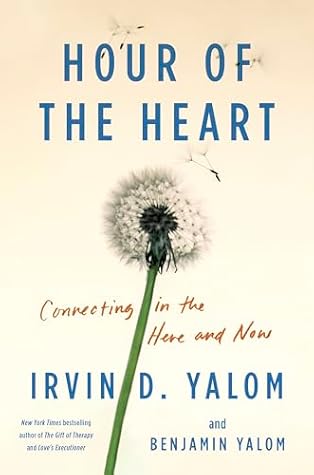More on this book
Kindle Notes & Highlights
Started reading
December 11, 2024
One thing that has been consistent in my now six decades as a therapist is that the longing for human connection is a main force that drives those seeking help.
Intimacy requires vulnerability: you can’t expect your friend, relative, or partner to be open to you unless you are willing to be open to them.
And such vulnerability, almost by definition, does not feel safe.
Existential psychotherapy focuses on patients’ inner conflicts that arise from confronting the givens of human existence—death, isolation, meaning in life, and freedom.
that heals.” What drives change is not a worksheet that the patient fills out, a brilliant question the therapist poses, or a behavioral change the patient must chart daily. In my approach to therapy the honest connection between the therapist and the patient is the medium through which we discover, learn, change, and heal.
Once again I was reminded that being present, sharing myself as a full and flawed human, always seems the most helpful position—much more so than being an unreachable expert.
Therapy, good therapy, is not about invading the other but helping them discover themselves.
But I’ve learned that, paradoxically, too much serenity on the surface often indicates a denial of deeper problems. It can be a potent avoidance strategy.
real change needs to come from the patient reconsidering their own tendencies and making a shift rather than being told what to do in a given situation.
Here-and-now work requires closeness and trust, the all-important therapeutic alliance.
I hope you would work together on becoming more comfortable with yourself. Your authentic self. Both internally, and eventually in how you relate to others. This might even mean being okay with showing the world some of your imperfections.”
have long believed that therapists are most effective when we offer ourselves to our patients as fellow travelers, human beings who must also suffer the slings and arrows and other indignities of being alive.
Deep down I know that honest sharing about myself as a normal, flawed, mortal human being—one besieged by my own doubts and
anxieties—is both normalizing of the patient’s troubles and a catalyst for the intimacy and trust needed for change.
On the contrary, my self-disclosure always seems to bring me and my patients closer together
The fewer regrets about how one has lived, the less death anxiety one experiences.
my own professional mantra, that “it is the relationship that heals.” That is to say, a patient’s growth and change comes as a result of experiences in the context of a close, safe bond with their therapist more than from any particular intervention, diagnosis, or medication.
In several of these stories I have mentioned the need to build this trusting connection as essential for here-and-now work. But I would go further and say that whatever approach one has to therapy, from short-term solution-focused therapy to cognitive behavioral therapy to long-term psychodynamic analysis, building a strong trusting positive relationship with one’s patients is critical.
that the relationship is indeed the mechanism of healing,
I think sharing parts of yourself with your patients is essential to creating a real relationship.”
Therapy often serves as a valuable dress rehearsal for life, with the therapist serving as a rehearsal mate.
I’ve learned through the years that we should not be stingy with our praise, not to patients or friends or colleagues. If being privy to people’s inner struggles for sixty years has taught me anything, it’s that people’s outward appearance of confidence and success often has little connection to the way they feel inside. You never know who desperately needs to hear approval or feel love.
Ultimately his is a therapy of human connection, of letting others matter to us deeply, of seeking meaning and sharing ourselves in the richest and most useful ways possible.


